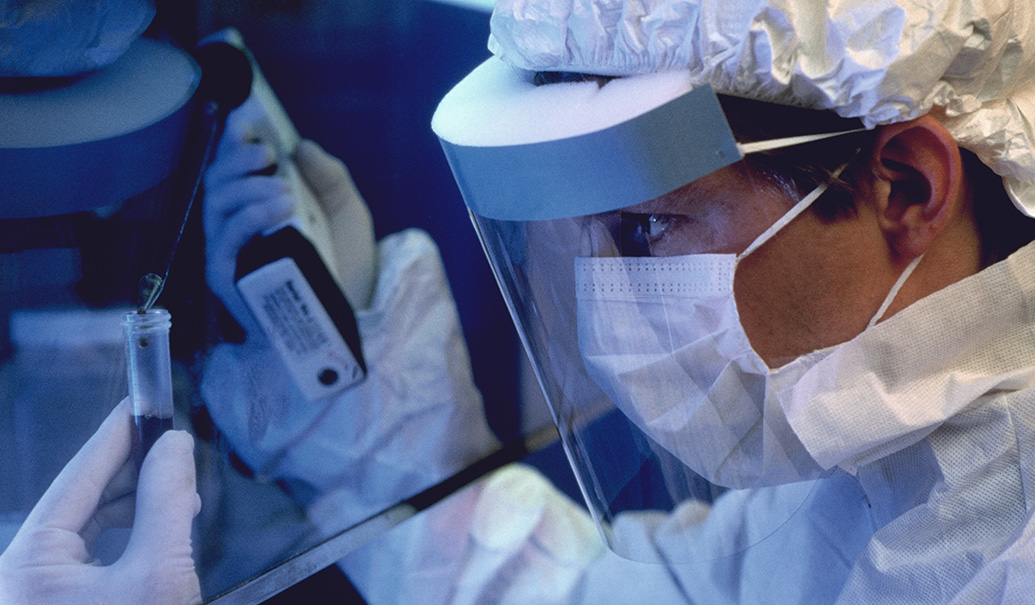Formula 1 racing is the ultimate fusion of science, engineering and human ability—played out in a heart-pounding competition often decided by a matter of seconds. While a spectator focuses on the driver and technology, there’s a complex web of people working behind the scenes to ensure everything is coordinated.
Delivering a chimeric antigen receptor T-cell (CAR-T) therapy to a patient requires a similar degree of precision and choreography among physicians, nurses, physician assistants and other medical personnel. Our team recently set out to get a better understanding of the current provider experience with CAR-T therapies. Over the course of our analysis, we realized that the journey to deliver these individualized therapies to the appropriate patients, on time, is as painstaking as building a championship Formula 1 car.
Five years of CAR-T: Transformative technology and performance
More than 12,000 patients globally have benefited from CAR-T cell therapies in the five years they’ve been commercially available. While the clinical benefits have transformed patients’ lives, the overall customer experience with CAR-Ts (Figure 1), which is orchestrated by manufacturers, leaves room for improvement. The positive scores reflect the clinical promise of these therapies and the willingness of providers to make accommodations to make it all work. However, the burden on providers is starting to mount and many say there is a limit to the number of cell therapies they can handle.
ZS’s recent survey of nearly 100 CAR-T treating and referring stakeholders confirms that the experience is quite variable. We assessed the experience at each step of the journey, including site onboarding, patient referral, patient identification and enrollment, ordering and availability, shipping and logistics, infusion and adverse event (AE) management and long-term monitoring (Figure 2).
For current and future cell therapy manufacturers, there are three keys to driving long-term success: achieving differentiation, simplifying the patient and provider experience with the product and engaging patients as advocates for CAR-T advocacy.
Turning the corner on clinical promise
The differences in clinical profiles of commercially available CAR-Ts today are not driving meaningful differences in customer experience. Only 7% of survey respondents noted a meaningful difference among CAR-T brands for post-infusion AE management. With this in mind, AE monitoring and management is a clinical element of the CAR-T experience that is perceived at the class level rather than at the brand level. Further, as physicians have gained experience treating patients with CAR-Ts, their initial negative perceptions of post-infusion AE management have become more neutral. Generally, they’re comfortable managing this step in the journey, as seen in Figure 2.
Reducing provider burden of CAR-T logistics
The biggest area of burden for providers today is ordering, scheduling and managing the logistics. The biggest pain point we observed is lack of product supply. Shortages are most acute with the multiple myeloma CAR-Ts. When product supply is limited, physicians feel burdened by having to choose which patients can be treated. These decisions influence patient selection and outcomes, which influences turnaround time (TAT). To help mitigate this life-or-death choice, there are incremental improvements manufacturers can pursue to make the experience more predictable and simpler.
More than 50% of respondents have frequently experienced issues with TAT or product quality that delayed the treatment. Customers told us that they prefer manufacturers who “under promise and over deliver” in terms of providing a realistic delivery timeline (Figure 3). This vital transparency will aid in logistical planning on the treatment side and prevent last-minute voice messages about lower-than-expected product quality.
The process of scheduling patients for apheresis and infusion is another area of opportunity. We observed large variability in the experience with little significant differentiation across portals. Respondents said that most portals do not provide what the customers are looking for. Ideally, scheduling patients should be like scheduling a flight. To achieve this, back-end CAR-T operations and highly manual processes to create the CAR-T product must be scaled to coordinate with the front-end customer interface.
However, it should be noted that the industry is making other incremental wins. Onboarding time has shrunk from four months or more to about two months for newer therapies. Healthcare professionals (HCPs) have also seen improvements in onboarding thanks to more digital trainings, flexible scheduling and improved supplemental reference material. Additionally, reimbursement for treatment sites has gotten better. We found that 90% of CAR-T treatment sites are now able to break even or become profitable administering a CAR-T.
Retooling patient engagement with cell and gene therapies
One of the most interesting juxtapositions we found in our research was the passionate feelings of hope and relief that CAR-T patients experienced after treatment contrasted against the near-absolute lack of interaction they had with manufacturers in certain markets. In short, patients are eager to share their experience with CAR-Ts. However, 70% of U.S. CAR-T patients we surveyed in a separate ZS Patients SPEAK study felt they lacked support from manufacturers to tell their survival stories to fellow cancer patients. Further, ZS’s CGT Market Tracker study found that less than 50% of clinically eligible patients within CAR-T treatment centers are being treated with CAR-Ts today.
Patients need and seek out emotional and psychological support during their CAR-T journey, while treaters think financial assistance is the most important piece of assistance needed. Treaters acknowledge they often don’t have the time to provide the critical psychological and emotional support patients are looking for. Patient-to-patient communication can ignite a critical engine to alleviating anxiety and offer comfort to CAR-T patients.
Manufacturers should step in to help address the gap between what patients need and physicians think they need (Figure 4) by building patient communities and connecting them with the transformative stories that turn patients into advocates. As cell therapies start to compete with more conventional therapeutic options, patients will have an even greater role to play, and manufacturers should make every effort to have patients on their side.
How can CAR-T shift gears to win?
The CAR-T industry is ripe for updates to a process that has seen minimal change over the past five years with six commercially available CAR-Ts. Indeed, the market is expected to blossom within the next five years, with 30 FDA approvals expected by 2027. However, this market expansion may be at odds with what treatment sites say is their limit for handling the logistical burden of cell therapies. Over 50% of survey respondents said they would only be willing to onboard six total cell therapies at their site. Hence, the “winning” cell therapies must be perceived as efficacious and simple to adopt.
Using a pit stop approach to anticipate challenges with streamlined solutions
Throughout the CAR-T journey, there are many opportunities for problems to emerge, including lack of communication, delays in shipping and product quality issues. Many of these mishaps can result in product loss and patient dropouts, which results in fewer patients receiving CAR-Ts. Taking a pit stop approach—wherein everyone stops what they’re doing to take a close look at their process—can help. This can mean that manufacturers conduct dry runs that account for process deviations and prepare organization-wide responses. Because CAR-Ts require a complex multi-stakeholder delivery model, a cross-functional team must be proactive in planning to address any speed bumps.
Digitalize CAR-T’s mission control
In Formula 1, mission control is constantly analyzing the data of their car, as well as the competitors on every turn. A designated mission control is essential in CAR-T delivery as well. Ordering portals and automated workflows help serve this function in the CAR-T world, and lack of connectivity between users of the portal can be disastrous and result in declining customer experiences. Manufacturers can address this in three ways:
- Building the technology: Customer interfaces can create negative differentiation if not designed and implemented the optimal way. The ordering portals, case management and other functions need to be in sync with each other to maximize usability, accessibility and ease of navigation. With some solutions already in the marketplace, manufacturers can choose to tailor them or build something custom, bearing in mind that the front end alone will not be the solution to differentiation.
- Automating workflows: Automating back-end workflows like slot management and manufacturing capacity planning will become more important as organizations look to scale. Allowing customers to book slots as easily as airline tickets must be an imperative. This will require both the front end and back end to be empowered. Today these processes are highly manual and require collection of insights across manufacturing facilities, a process that will not be scalable in the future.
- Power of data: Manufacturers are sitting on a wealth of real-world data. Every patient generates approximately 400 data points throughout their journey. Building a connected data infrastructure across functions to deploy predictive analytics will help to bring consistency in the customer experience. Positive or negative, just like Formula 1, supplying customers with real-time insights on performance will keep them engaged throughout the race.
Win the qualifiers: Refine the processes and experience in clinical trials
Formula 1 teams are constantly looking to improve their cars and use qualifiers to try new strategies. CAR-T manufacturers can similarly refine their processes during clinical trials and ensure the experience is tailored appropriately for commercialization. Cell therapy manufacturers should use clinical trials as a venue to refine the processes that will live on through the therapy’s commercial launch. Manufacturers can leverage time early in the clinical trial to work with providers and design these processes to ensure a robust infrastructure upon launch.
The long road to the finish line
Overall, our research found that customer experience with cell therapies is positive, but there are numerous opportunities to create differentiation and establish long-term leadership. CAR-T manufacturers need to focus on educating patients and empowering them to boost future adoption. Patients are eager for help managing their emotions, their identities and their anxiety throughout the CAR-T treatment journey. Failing to do this puts adoption at risk.
The reality is simple. Manufacturers must streamline CAR-T logistics today or risk developing therapies that have little uptake at treatment sites. Ultimately, it’s not just a good racer in a fast car that wins. The strategy has to be sound, the infrastructure top notch and the execution flawless to avoid getting left in the dust.
Add insights to your inbox
We’ll send you content you’ll want to read – and put to use.
















